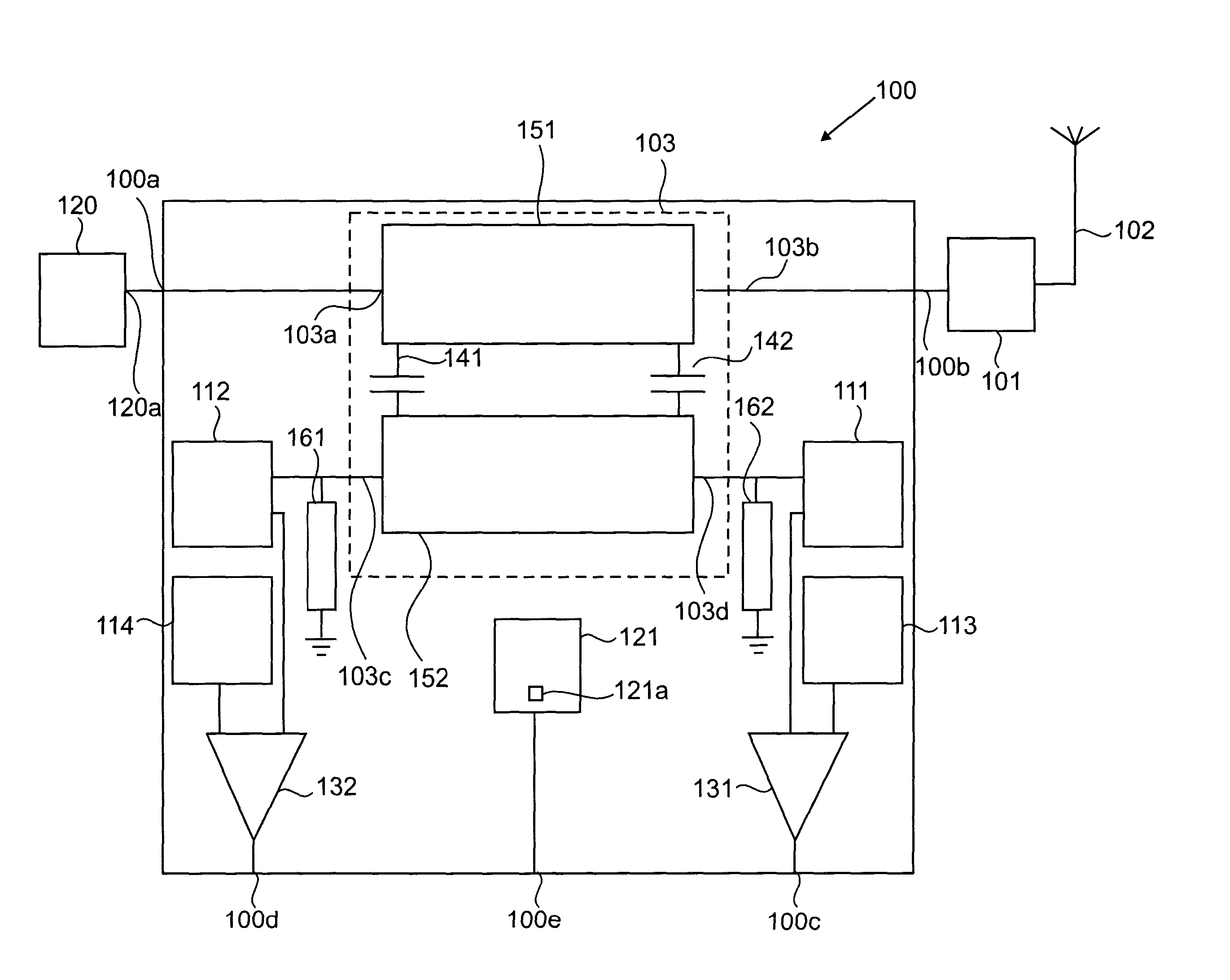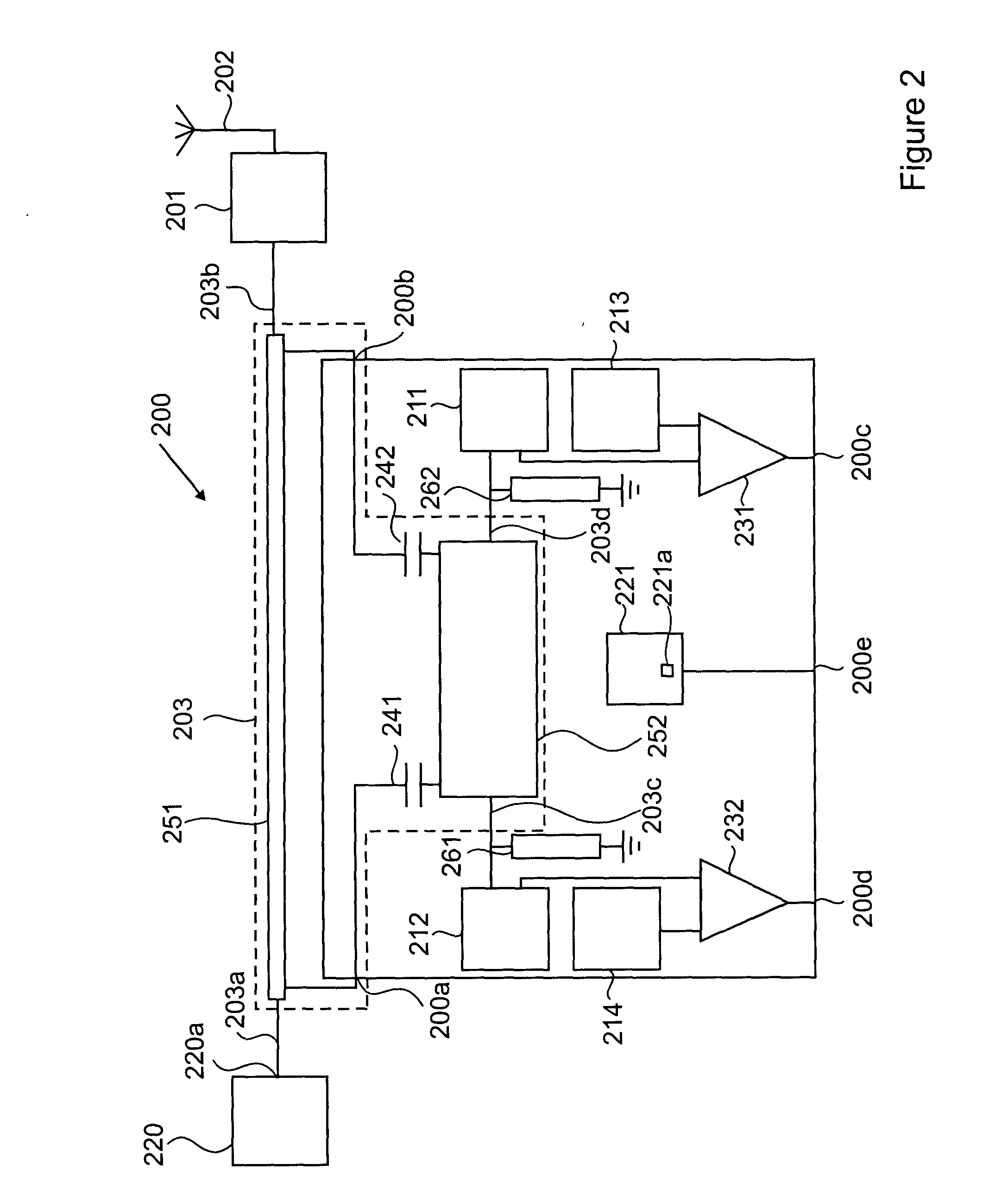Power transfer measurement circuit for wireless systems
a power transfer and wireless system technology, applied in the direction of antennas, transmission, modulation, etc., can solve the problems of unnecessary energy consumption of pa, unsatisfactory output signal emission, and low efficiency
- Summary
- Abstract
- Description
- Claims
- Application Information
AI Technical Summary
Problems solved by technology
Method used
Image
Examples
first embodiment
[0015]FIG. 1 illustrates a coupler and detector circuit (CDC) 100 having an internal signal path, in accordance with the invention. A power amplifier (PA) circuit 120 is disposed for providing an amplified RF output signal via an output port thereof 120a to a first node 100a of the CDC 100. Within the CDC the amplified RF output signal propagates through a RF coupler, in the form of a quarter wave coupler circuit 103, from a first port thereof 103a to a second port thereof 103b, along a main signal path 151, disposed between a first node 100a directly connected to the PA output port 120a, and a second node 100b directly connected, at an input of the feedline circuit 101. The feedline circuit 101 is disposed between a RF antenna 102 and the second node 100b of the CDC 100, where the antenna 102 is used to broadcast the amplified RF output signal. The second port 103b of the quarter wave coupler is directly connected to the second node 100b of the CDC 100. The energy of the amplified ...
second embodiment
[0022]FIG. 2 illustrates a coupler and detector circuit (CDC) 200 having an external signal path, in accordance with the invention. The external signal path, in the form of a main signal path 251, is not disposed on a same semiconductor die as the CDC 200. The main signal path 251 is preferably in the form of a PCB trace, with a first coupling capacitor 241 and a second coupling capacitor 242 disposed between the main signal path and a coupled signal path 252. The off-chip main signal path 251 and the on-chip coupled signal path form the coupler circuit, in the form of a quarter wave coupler circuit 203. Disposed on opposing ends of the main signal path are a first node 203a and a second node 203b. A power amplifier (PA) circuit 220 provides an amplified RF output signal via an output port thereof 220a to the first node 203a of the CDC 100. The amplified RF output signal propagates through the main signal path 251 to the second node 203b. The second node 203b is directly connected i...
PUM
 Login to View More
Login to View More Abstract
Description
Claims
Application Information
 Login to View More
Login to View More - R&D
- Intellectual Property
- Life Sciences
- Materials
- Tech Scout
- Unparalleled Data Quality
- Higher Quality Content
- 60% Fewer Hallucinations
Browse by: Latest US Patents, China's latest patents, Technical Efficacy Thesaurus, Application Domain, Technology Topic, Popular Technical Reports.
© 2025 PatSnap. All rights reserved.Legal|Privacy policy|Modern Slavery Act Transparency Statement|Sitemap|About US| Contact US: help@patsnap.com



